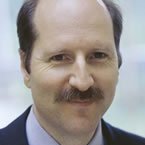
By David Cavalla, Numedicus Limited.
If you’re fond of alliteration you’ll know that you can divide the stakeholders in modern healthcare into three ‘P’s: patients, payers and pharmaceutical companies, with physicians and pharmacists taking additional minor roles. Traditionally the patient has played a passive part, but over recent years the patient community has dramatically increased its involvement and influence in modern healthcare delivery, particularly in the rare disease sector.
Approved drugs do not exist for over 90% of the 7,000-8,000 rare diseases, and the commercialization of niche products for rare and orphan drugs has become the most favored growth opportunity over the conventional mass-market ‘blockbuster’. Repurposing is a common development option, but the development of drugs in these areas is dependent on access to patients in clinical trials.
Patients with rare conditions are increasingly organized into communities with a voice, and they are using their collective power to get what they want, namely access to better medicines.
Social media helps patients organize
Rare disease patients are much more likely to be ill as a child, and from inherited genes, than as an older person. This leads to highly motivated communities consisting of patients and their friends and relatives. Social media makes it possible for self-organizing communities to further the aims of rare disease patients.
Pharma companies are keen to form alliances with patient groups to further their case for payers to reimburse expensive medicines.
A key demand of patient groups is that that healthcare resources are allocated to the patients, even when such resources are scarce. The charity Action Duchenne, recently parked the wheelchairs of over 100 teenage boys outside the UK parliament to campaign for reimbursement of the first approved drug for the condition.
Some of the carers of rare disease patients and the patients themselves go to great lengths to educate themselves about the relevant condition. From this position, it is an easy step for them to ask themselves a simple question – what more can a patient or carer do to improve therapy?
Patient groups founding drug companies
John Crowley has two children with a severe neuromuscular lysosomal storage disease called Pompe Disease. He started a foundation to raise money for the condition, then took a job with Bristol Myers Squibb in order to learn all he could about the pharmaceutical business.
His next step was to found Novazyme Pharmaceuticals to develop an enzyme replacement therapy for his daughters’ condition. This was subsequently acquired by Genzyme corporation and the treatment was brought to market.
Later, John Crowley became CEO of Amicus Therapeutics which is also engaged in lysosomal storage disorder research for Pompe and Fabry diseases. His story featured in a book, and in 2010 was made into a film called Extraordinary Measures starring Harrison Ford.
This story is exceptional, but there are many other examples of patient- and carer-motivated drug development.
Charities taking on drug development
The Cure Parkinson’s Trust is a leading charity aiming to slow the progression, stop or even to reverse Parkinson Disease, the progressive neurodegenerative condition characterised by rigidity, tremor and bradykinesia.
The trust has rapidly acquired interests into the study of a wide range of potential therapeutic interventions, and is currently connected with over 50 pharmaceutical companies and associated with nearly 3,000 investigators. They are carrying out a number of advanced clinical trials, including a Phase III trial of the calcium L-type blocker isradipine; drug repurposing features frequently in the work they do, with studies underway on exenatide and liraglutide (GLP-1 agonists), simvastatin (HMG-CoA inhibitor) and N-acetyl cysteine (antioxidant).
They place particular emphasis on a network of key opinion leaders with interests in investigating novel mechanisms in the condition, and are led by Dr Richard Wyse, a former lecturer in various London hospitals as well as medical director at two biotech companies.
Another example of this is Dr Pan Pantziarka of the ReDO project (Repurposing Drugs in Oncology), which was formed from the AntiCancer Fund and Global Cures. This organization has 5 trials underway, mostly drug repurposing combinations such as metformin (antidiabetic)/zoledronate (anti-osteoporosis)/sirolimus (transplant rejection medicine).
A particular focus is on the treatment of the rare cancer angiosarcoma with propranolol. Dr Pantziarka has a personal reason for his interest in cancer, but is also scientifically trained. ReDO are looking at putting in place a regime of tax incentives from the UK Government for the development of generic repurposed drugs.
The wider scope for development models
These examples point out the complex ways in which charities are becoming integrated into the drug R&D landscape, far beyond their original role in fundraising and care support for their conditions, patients can be medical experts, drug developers and clinical investigators. This is particularly the case for rare diseases, but in the future the changes will almost certainly extend into more common diseases too.
For the larger charities, this is not an entirely new phenomenon: Cancer Research UK supports a lot of research activity already – in 2015/6, amounting to £376 million, including nearly £120 million into the biology of cancer. The British Heart Foundation, too, spends over £100 million per annum, mostly on basic research. The focus on drug repurposing as a more efficient translational strategy is likely to grow, however, because of the cost and time advantages which characterise this approach, and it will be interesting to see what changes accrue when some of the larger charities adopt it to the same degree as some of the examples cited above.
